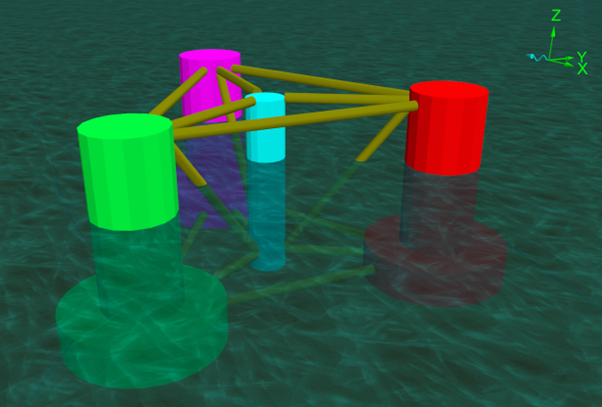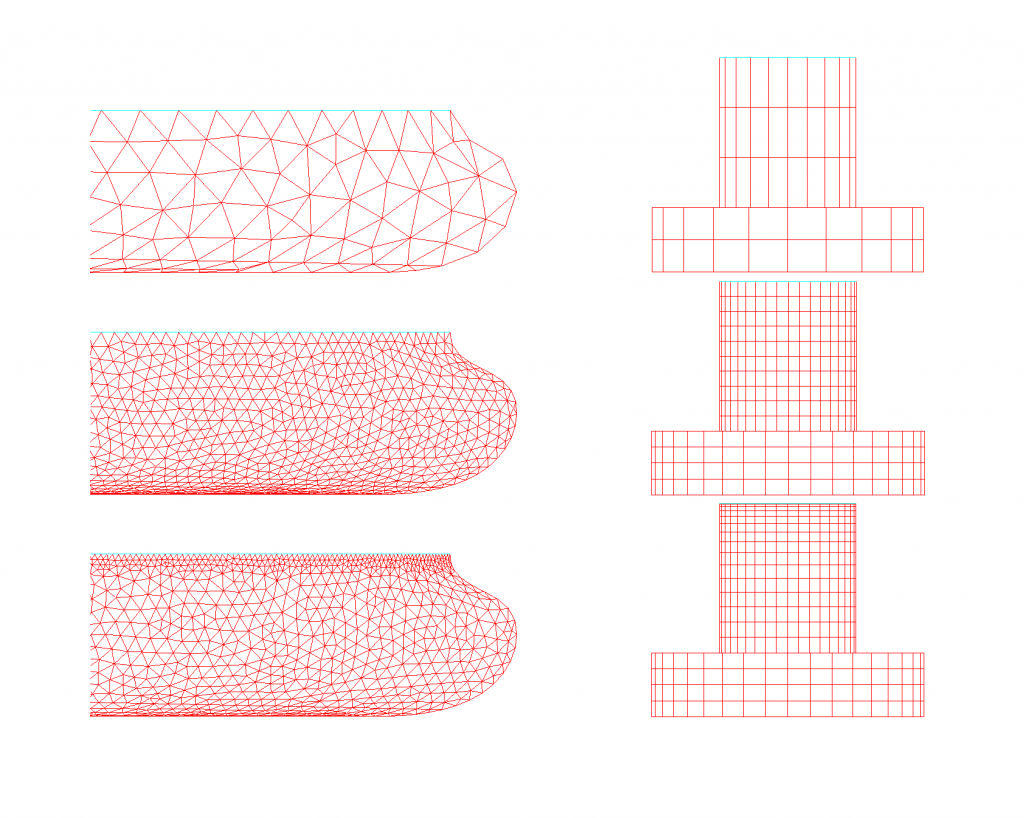A new example is now available on our website: L03 Semi-sub multibody analysis. This example focusses on a semi-sub platform that closely resembles the OC4 platform, as modelled in example L02.
In the L02 example, we assume the platform is a single rigid body. In the L03 example, we are interested in the loads acting through the connecting members. Consequently, we have divided the platform into four distinct floating bodies and used OrcaWave to run a multibody diffraction analysis. In OrcaFlex, the four vessel objects are connected via line objects with structural properties that represent the cross bracings and pontoons. Further details can be found in the accompanying PDF description document.
Please note that example L03 takes advantage of recent developments to improve the workflow when defining external stiffness for multibody analyses. Therefore, this example is intended for use with OrcaWave and OrcaFlex version 11.4 onward.
In version 11.4 we also developed OrcaWave and OrcaFlex to be capable of undertaking multibody analyses for objects consisting of multiple sectional bodies. This new feature is not considered as part of this example, although we hope to develop an example that will demonstrate this feature in the future.
We hope that you will find this latest example helpful and informative.

